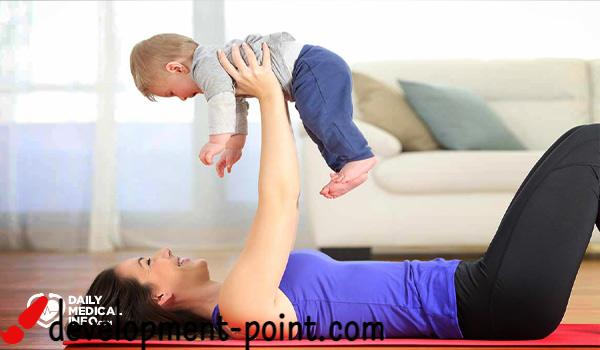The inverted nipple, its degrees, its effect on breastfeeding and its treatment
Many people suffer from what is called an inverted nipple or a sunken nipple, what is this condition? Is it dangerous? Does it affect breastfeeding in women? Read this article to know more details.
What is an inverted nipple?
An inverted nipple, sometimes called a sunken nipple, is known to change the shape of the nipple so that it is inward rather than protruding, that is, it points to the inside of the breast rather than the outside, but excluding stimulation, sometimes also called a flat nipple (nipple flat with the surface of the breast) the breast inside the areola).
A person may have an inverted nipple in one or both breasts, and according to one source, the nipple may be flat, point slightly inward, or be so sunken and deep that it cannot be pulled out until after plastic surgery.
Most women are born with an inverted nipple, which is usually harmless and does not indicate any health problem, but if you notice sudden changes in the shape of the nipple, it is best to consult a doctor; It may be a sign of an illness that requires medical attention.
Degrees of inverted nipple
The sources indicate that there are degrees of a sunken or inverted nipple, which are:
- first degree: You can pull the nipple out with your fingers, and it will hold this position for a few minutes before returning to its original position (either flat or pointing inward), and it doesn’t cause any problems during breastfeeding.
- second grade: The nipple can also be pulled out, but it quickly returns inward, which is the most common degree. In most women with inverted nipple, breastfeeding women may have some problems while feeding.
- Third degree: The nipple cannot be pulled out with fingers, and nursing mothers have difficulties feeding their babies, and breastfeeding may become impossible.
This condition can be identified manually by using your fingers for an erection of the nipple, or by natural arousal by touching, feeding, or feeling cold.

Reasons for entering the nipples
The entry of the two nipples or one nipple inside is one of the types of nipples, and this indicates that you are born with it, but it may also develop later after age, and there are many causes leading to a sunken, inverted or flat nipple, and some of these reasons may be dangerous, including :
aging
Physical changes occur starting around the mid-thirties, and continue to change as you age, and the milk ducts shrink as a woman approaches menopause, which may make the nipple tilt inward and is usually normal and does not indicate disease, but one of the sources warns of the importance of Regular screening, due to the increased risk of breast cancer.
Infections and infections
It is possible to get blocked and infected mammary ducts, and cause the nipple to move in, and these problems affect any woman, but the risk of infection increases when approaching menopause or post-menopause, and the following are some of these problems:
- Mammary duct ecstasia: One or more milk ducts below the nipple become blocked and infected, which pulls them inward.
- Infection: Bacteria may enter through one of the milk ducts, as we explained to you, or through a crack and injury in the nipple, causing the nipple to withdraw inward.
- Accumulation of abscess and pus under the areola: This is also one of the problems of infection.
Tumors and breast cancer
- The development of a tumor that attacks the milk ducts behind the nipple.
- Paget’s disease: A rare cancerous tumor that develops on the areola and nipple.
General reasons
- Breastfeeding: The nipple may tilt inward due to scarring in the milk ducts after breastfeeding.
- Breast surgeries.
- exposure to injury.
When should you visit a doctor?
As we have previously explained to you, inverted nipples are not considered dangerous if a person was born with them, but a doctor should be visited immediately after any sudden change in the shape of the nipple to determine the possible causes for this condition, especially when the following symptoms appear:
- Swelling, lumps in the nipple.
- Feeling of pain and discomfort.
- Thickening of the skin around the nipple.
- Infections, redness and change in skin color.
- Fluid draining from the nipple.
What is the impact of the inverted nipple on breastfeeding?
If you have a nipple that has curved inward, this does not mean that you cannot breastfeed; Many who suffer from flat nipples are successful in breastfeeding, as we explained earlier. You can breastfeed if you suffer from either the first or second degree.
There are some techniques that can be used to highlight the nipples outward, as the doctor will explain to you, but some women suffer from a problem with breastfeeding at other times – such as those who suffer from the third degree -, and you should consult a doctor to find out the reasons and improve breastfeeding.
sunken nipple treatment
Some people think about how to change the shape of the nipple, especially women, due to their fear of breastfeeding problems, or aesthetic problems affecting the shape of the body and self-confidence, and there are some ways suggested by doctors to treat this problem, including:
- Hoffman’s technique: This is a home exercise for pulling the nipple out. It’s an easy exercise. Just two thumbs are on either side of the nipple. Press firmly on the breast tissue until the nipple pops out. Repeat this a few times a day. The time the nipple stays out varies from person to person.
- Suction devices: These are special devices for sucking the nipples out.
- Plastic surgery: Plastic surgeons resort to various cosmetic surgical procedures to change the shape of the nipple and protrude it to the outside.
If the sunken nipple is due to mammary ducts, it may be treated on its own or with home remedies, but it may require a surgical procedure to treat it. In cases of cancer, doctors treat the main problem first and then discuss cosmetic treatments after that.

